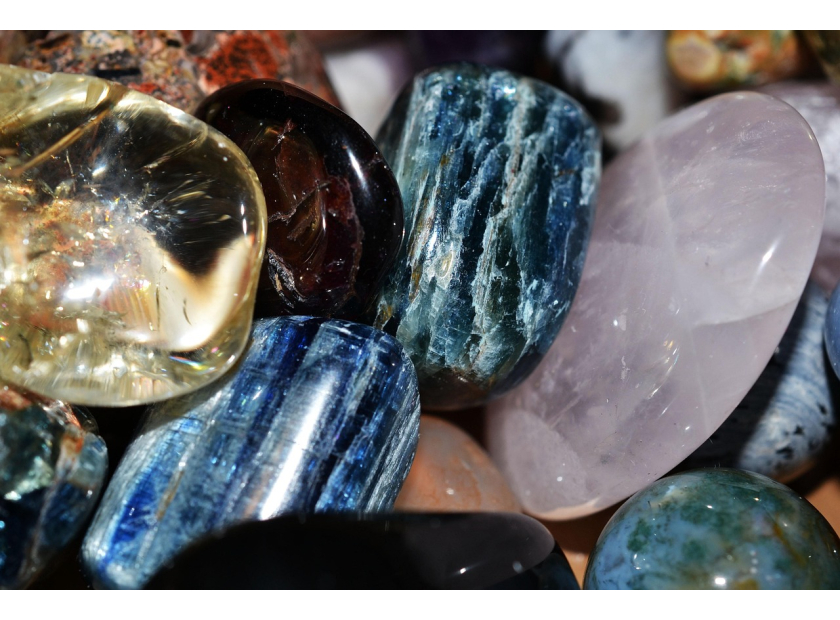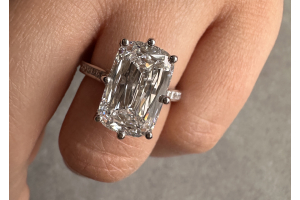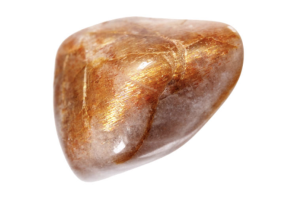GBP
/
GBP
/
Shipping to:
Currency:
How to Tell If a Kyanite Is Real – Spotting Genuine Kyanite Like a Pro
Kyanite is a captivating gemstone, cherished for its striking blue hues and unique properties.
Whether you're a collector, jeweller, or simply an enthusiast, ensuring the authenticity of kyanite is crucial.
With the market occasionally flooded with imitations, it's essential to know how to distinguish genuine kyanite from the fakes.
Here's a comprehensive guide to help you identify real kyanite.
Understanding Kyanite
Kyanite is an aluminium silicate mineral, typically found in metamorphic rocks.
It's renowned for its anisotropic properties, meaning its hardness varies depending on the direction of the crystal.
This characteristic, along with its vibrant colours ranging from deep blue to green and even orange, makes it a favourite among gem enthusiasts.
If you're looking for more information on gemstones, check out Gemstones.
Reasons Behind Kyanite Imitations
The allure of kyanite, especially its deep blue variety, has led to the production of imitations.
Materials like dyed quartz, glass, or synthetic stones are sometimes misrepresented as kyanite.
Purchasing counterfeit stones not only affects the value but can also impact the metaphysical properties some associate with genuine kyanite.
When exploring different gemstones for your jewellery, make sure to check out Gemstone Rings to find unique pieces that showcase real gemstones.
Identifying Genuine Kyanite
Examining Colour and Transparency
Authentic kyanite typically displays a patchy blue colour, though it can range from pale to deep blue and occasionally appears in shades of green, white, or grey.
The colour is often uneven, with natural zoning.
Genuine kyanite is usually translucent to transparent, with a vitreous (glass-like) lustre.
Testing Hardness
One of kyanite's distinguishing features is its variable hardness.
Parallel to its length, kyanite has a hardness of about 4.5 to 5 on the Mohs scale, while perpendicular to its length, it ranges from 6.5 to 7.
This means a steel needle can scratch kyanite along its length but not across it.
However, conducting a scratch test requires caution to avoid damaging the stone.
If you’re interested in learning more about the different gemstones used in jewellery, you can explore Lab Grown Diamonds vs Gemstones.
Observing Crystal Structure
Kyanite typically forms elongated, bladed crystals, often resembling a splintered mass of colourful wood when held up to the light.
This unique structure is challenging to replicate in synthetic materials.
Noting Cleavage and Fracture
Kyanite has perfect cleavage in one direction and imperfect in another, with a splintery fracture.
This means it can split along specific planes, a feature not commonly found in imitation stones.
For more insights into the differences between gemstones, check out How and Where Are Gemstones and Diamonds Formed?.
Advanced Gemological Tests
Refractive Index Measurement
Using a refractometer, genuine kyanite typically shows refractive indices between 1.710 and 1.734.
This test is best conducted by professionals, as it requires specialised equipment.
Specific Gravity Test
Kyanite's specific gravity ranges from 3.53 to 3.65.
Determining this involves measuring the stone's density and comparing it to known values, a task suited for gemological laboratories.
If you’re into advanced gemstone testing or looking for high-quality gems, you can also explore Non-Traditional Engagement Rings for alternative options.
Tips to Avoid Counterfeit Kyanite
Purchase from Reputable Dealers
Always buy kyanite from trusted and established gem dealers.
They are more likely to provide authentic stones and offer guarantees of authenticity.
Request Certification
Ask for authenticity certificates from recognised gemological institutes.
These documents provide assurance regarding the stone's genuineness.
Be Wary of Prices
If a deal seems too good to be true, it probably is.
Familiarise yourself with the typical market value of kyanite to make informed purchasing decisions.
When selecting gemstones for your jewellery, you might want to explore Diamond Wedding Rings to compare gemstone options.
Frequently Asked Questions
Can kyanite be synthetically produced?
While scientists have successfully synthesised kyanite for research purposes, the challenges in cutting and the abundance of natural kyanite make synthetic versions uncommon in the jewellery market.
Is dyed kyanite considered valuable?
Dyed kyanite can enhance the stone's appearance but may not hold the same value as natural, untreated kyanite.
Transparency about treatments is essential when purchasing.
Which stones are commonly mistaken for kyanite?
Blue kyanite is sometimes confused with sapphire due to similar colouring.
However, differences in hardness, refractive index, and specific gravity can help distinguish them.








